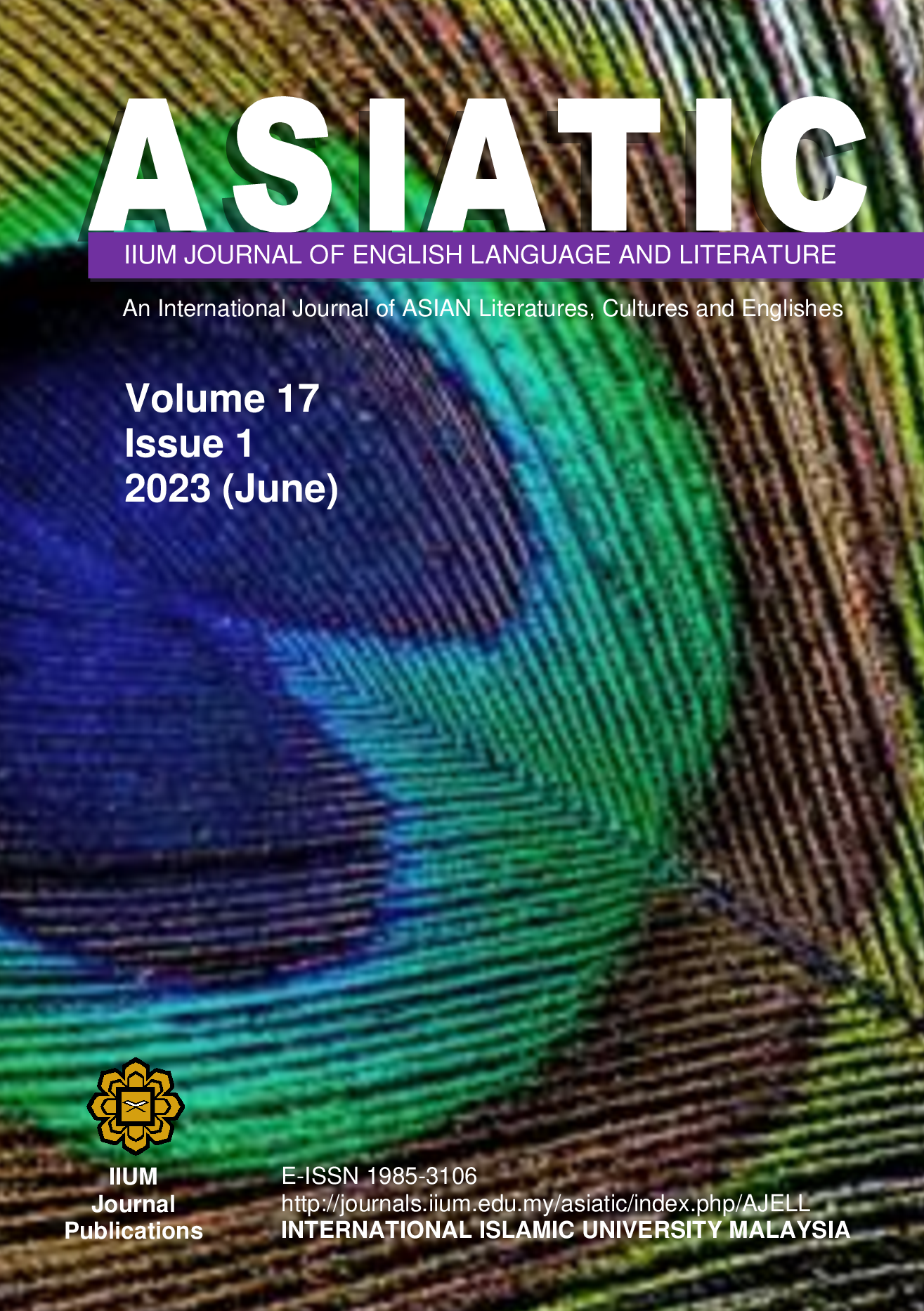Situating Kazuo Ishiguro Within the Realms of Memory and Identity
DOI:
https://doi.org/10.31436/asiatic.v17i1.2792Abstract
This article focuses on components of memory and identity and their thematic centrality in Kazuo Ishiguro’s two novels namely, A Pale View of Hills (1982) and The Remains of the Day (1988). Ishiguro explores the complexities of memory in his novels, where distortion, suppression, and unreliability serve to define an individual’s identity through memory. Memory is a literary trope that Ishiguro has used repeatedly and diversely to enrich both his characters and plots. By examining how memories inform identity, this paper seeks to understand how our memories can affect our sense of self, and how this can shape our identity. The paper proposes that memories are not just simple recollections of events but are also complex narratives that are constructed from various sources. It argues that the interpretations of our memories can have a powerful effect on our sense of self and our identity.
Downloads
Downloads
Published
How to Cite
Issue
Section
License
Copyrights of all materials published in Asiatic are held exclusively by the Journal and the respective author/s. Any reproduction of material from the journal without proper acknowledgement or prior permission will result in the infringement of intellectual property laws.



